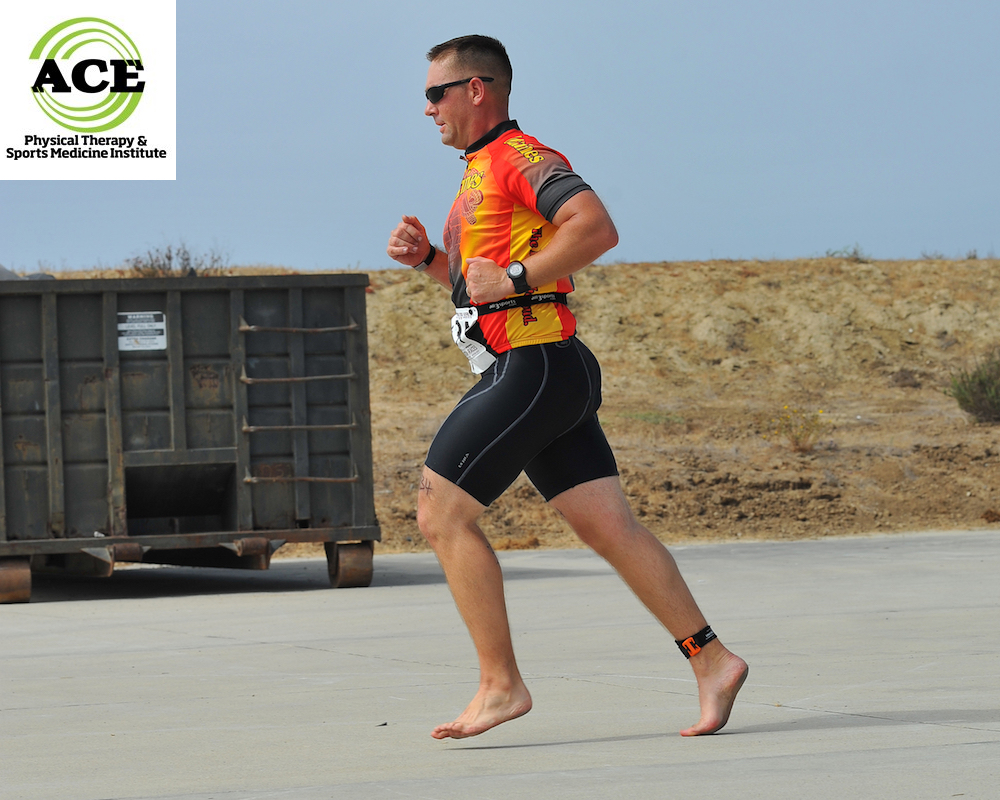ASSESSING SENSORY STIMULATION ON SOLE OF FOOT

Tid Bits of Info
- There are 4 different types of nerve receptors in the sole of the foot.
- Sensitivity in the sole of the foot is at its peak by the age of 40.
- The impulses enter the foot at < 50 ms and fast twitch muscle fibers contract at 70 ms therefore they are “slower” than the impulses.
- Bare foot or minimalist shoe running should include landing on the mid to forefoot.
- If you suffer a foot injury or have pain when walking/running, seek the advice and treatment of a Physical Therapist.
As Physical Therapists and other healthcare workers seek to reduce foot pain, they consider how the foot adjusts gravity forces when moving through space. When someone walks, the foot strikes the ground and a great deal of “information” is processed by the nervous system and its connections in the foot. Assessing this information, can help determine how the foot is functioning while walking, and it has reinforced the value of minimalist shoes and bare feet for strengthening foot muscles and reducing injuries.
The skin on the sole of the human foot has a high density of cutaneous nerves that process the sensations that the foot experiences when it makes contact with the ground during gait of any kind. The higher density of nerve endings leads to more information sent to the brain. The nerves of the foot process 2 point discrimination, skin stretch and fast and slow vibrations. The vibrations are thought to help produce the amount of muscle contraction needed to dynamically stabilize the foot anatomy with the muscles that are intrinsic to the foot itself. These sensory receptors have been shown to be most sensitive by the age of 40 and slowly decrease over the next decades. This may be one reason why elderly people have a higher tendency to lose their balance and fall.
The muscles of the foot are required to produce enough contractile force that “stiffens” the anatomy of the foot and provides a rigid lever that is stable. The stable lever (your foot) is then capable of maintaining balance and propelling our body weight through space. The amount of force and the speed at which the muscle contract is crucial at maintaining balance and properly moving us from point A to B.
The inability to “handle” the force of gravity upon ground impact can lead to over-use injuries, loss of balance and an overall reduction in functional capabilities. The muscles of the foot may not be able to contract fast enough or in a timely manner to stabilize the foot. Being able to “pre-activate” the muscles is critical to keep our feet healthy from impact forces. There are studies being performed that indicate that that certain footwear, insoles, injuries, aging and diseases that affect the nerves of the foot can drastically reduce the ability to “pre-activate” the muscle of the foot.

Many shoes have been designed to “absorb” shock and limit the impact force that a person perceives when their foot strikes the ground. Unfortunately, these shoes can decrease the amount of vibration that the sole of the foot “registers” and this can lead to less stability secondary to a suppressed amount of muscle contraction in the foot. Shoe manufacturers have used extra cushioning, smooth insoles, gel insoles and many other manufacturing techniques to alleviate injuries from the impact force. The results are not promising because there has not been a significant reduction in the number of impact injuries in the foot in the past 15 years.
In the past 8-10 years many clinicians have studied the positive effects of running and walking in bare feet or with a minimalist shoe. These shoes reduce the “cushion” of the shoe and force the foot muscles to do their job of stabilizing and protecting the foot upon impact with the ground. The results have been very positive providing the person is diligent about a proper “break-in” period when they begin to wear this style of shoe. This time period can be as long as 6-9 months when they are worn for running. It appears that a minimalist shoe enables the sensory receptors in the sole of the foot to be stimulated sufficiently and activate the muscles. This activation stabilizes the foot and the foot is able to sustain the repetitive impact forces when someone walks or runs.
Proper assessment of the stimuli to the sole of the foot is necessary for the foot to function properly during gait. If the stimuli are not processed by the nervous system efficiently and accurately, the foot can sustain injury or a person can lose their balance and fall. Processing the information from the sole of the foot is essential for healthy living.
























